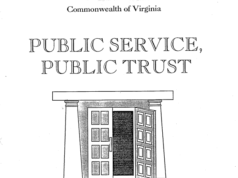 Was the mid-Atlantic region’s mad rush for bottled water ahead of Hurricane Irene a necessary evil of disaster preparation or a waste of money? As with many questions like this, it’s an environmental concern, sure – but the bigger issue is what an unnecessary waste of money it is, along with the real risk we’re ignoring.
Was the mid-Atlantic region’s mad rush for bottled water ahead of Hurricane Irene a necessary evil of disaster preparation or a waste of money? As with many questions like this, it’s an environmental concern, sure – but the bigger issue is what an unnecessary waste of money it is, along with the real risk we’re ignoring.
Yes, bottled water is worse for the environment and might be worse from a health perspective than tap water. But considering Americans drink nearly 9 billion gallons of bottled water last year requiring millions of gallons of petroleum to produce, the Irene surge is a drop in the bucket.
If there’s a storm coming and you don’t already have backup water, there’s absolutely no need to waste money on buying it from the store. Any household has plenty of pitchers, bottles, Tupperware and pots that can serve as temporary tap water storage. For free! Putting those containers in the fridge or freezer can then keep your food cold longer in case you lose power. (Side note: I think people take “water” too literally. Just looking in my own fridge right now, I have a case of Sprite Zero that could sustain me for few days in a pinch. I guess waiting in long lines to purchase items specifically to ward off this threat gives people a sense of security.)
But the whole mad dash to prepare shows just how unprepared most people really are for sudden disaster.
It’s the unforeseen catastrophes that are the real danger, like if Tuesday’s earthquake had been stronger. Ready.gov advises you to keep a disaster kit with three gallons of water for each person in your household. Ideally, you’d buy three gallon jugs of water, stick them in your closet, and forget about them until you needed them. Unopened bottled water doesn’t go bad, so these jugs could literally last a lifetime. You could also just get a battery-powered UV water sterilizer, as my friend Every Day Father points out.
I don’t say “a lifetime” by accident – it’s extremely rare for the DC area to lose both safe tap water AND the ability to travel for three consecutive days. The only recent example I could find of a disaster knocking out drinking water was after the remains of Hurricane Isabel hit the DC region in 2003. Fairfax County issued a boil water order, but lifted it just two days later and even then, free bottled water was distributed. And since then, Fairfax has worked to upgrade its water facility’s backup power system.
My concern is that obsessing over canned goods, water and flashlight batteries ignores a huge gap in our emergency response system. More than a quarter of American households now rely only on wireless phones. As the earthquake reminded us, our cell phone system can’t handle disasters.
Even if the system survives, how long would our cell phone batteries last without electricity? When I woke up Sunday morning, there were 118,000 customers without power in Northern Virginia. My Blackberry battery sometimes lasts less than a day. How many people paid for bottled water, yet would’ve relied on only their cell phones for emergency calls during an extended power outage – a much more likely storm outcome than losing water?
Fortunately, there’s an easy solution available for under $30. Ready.gov recommends keeping a solar cell phone charger in your disaster kit. And when you’re not riding out a storm, you can use it to charge your devices while camping.
As for upgrading our national wireless infrastructure, cell phone companies say it’s not their job. “For cell phone carriers it really doesn’t make sense from a cost perspective for them to be building their networks for the highest demand,” CNET’s Maggie Reardon told CBS News.
Would the federal government be willing to invest a few billion dollars putting people to work making sure our wireless networks are ready for the worst? Not while Rep. Eric Cantor’s running the House – for him, not even earthquake response is worth funding without simultaneously laying off other government workers.
Cross-posted from The Green Miles












![Saturday News: “Trump’s latest tariff TACO probably won’t make your life more affordable”; “The Epstein Email Cache: 2,300 Messages, Many of Which Mention Trump”; “[MTG] questions if Trump is still the ‘America First’ president”; “Jim Ryan tells all: ‘What did the Governor know, when did he know it?’”](https://bluevirginia.us/wp-content/uploads/2025/11/montage1115-100x75.jpg)
